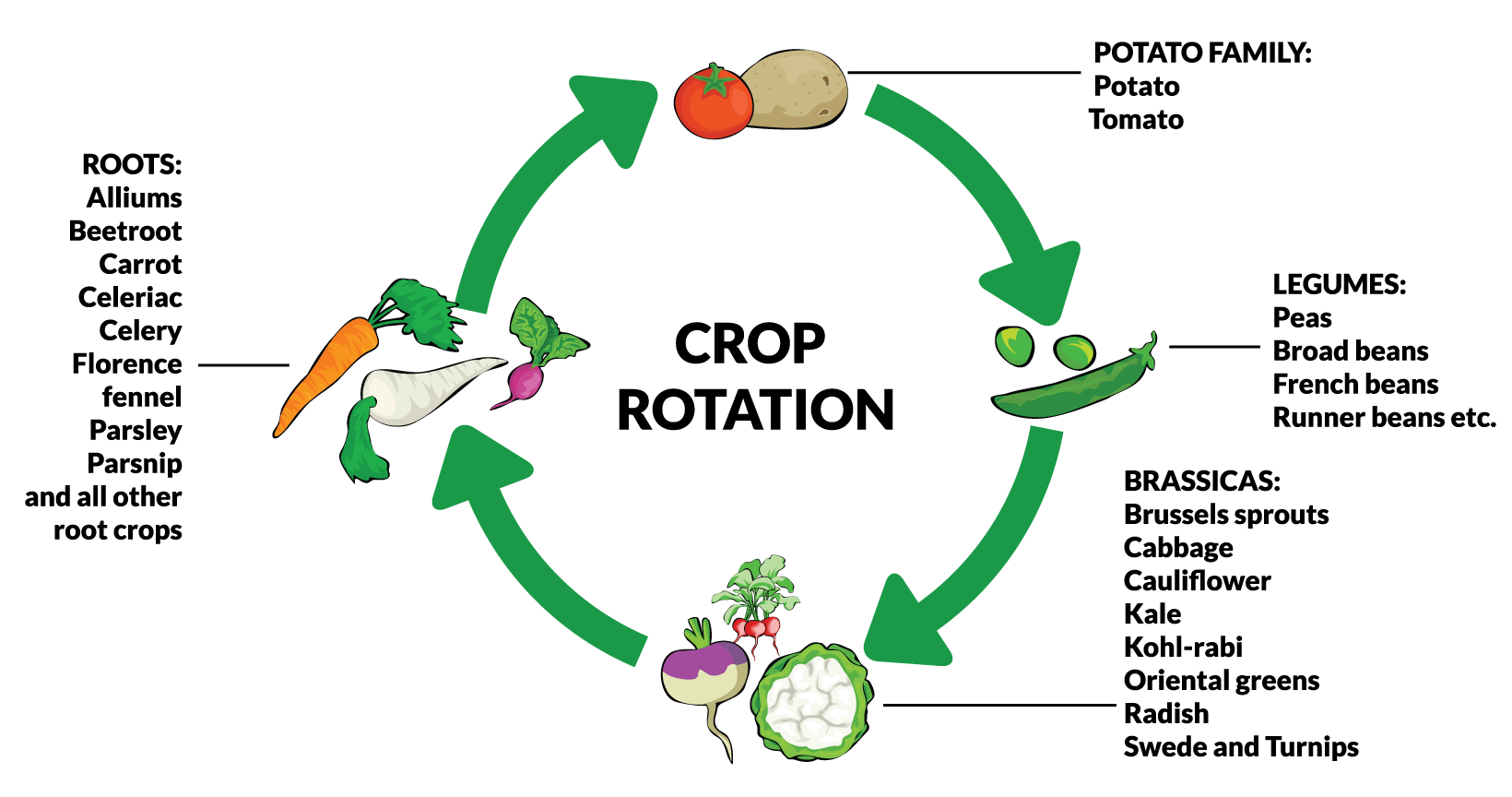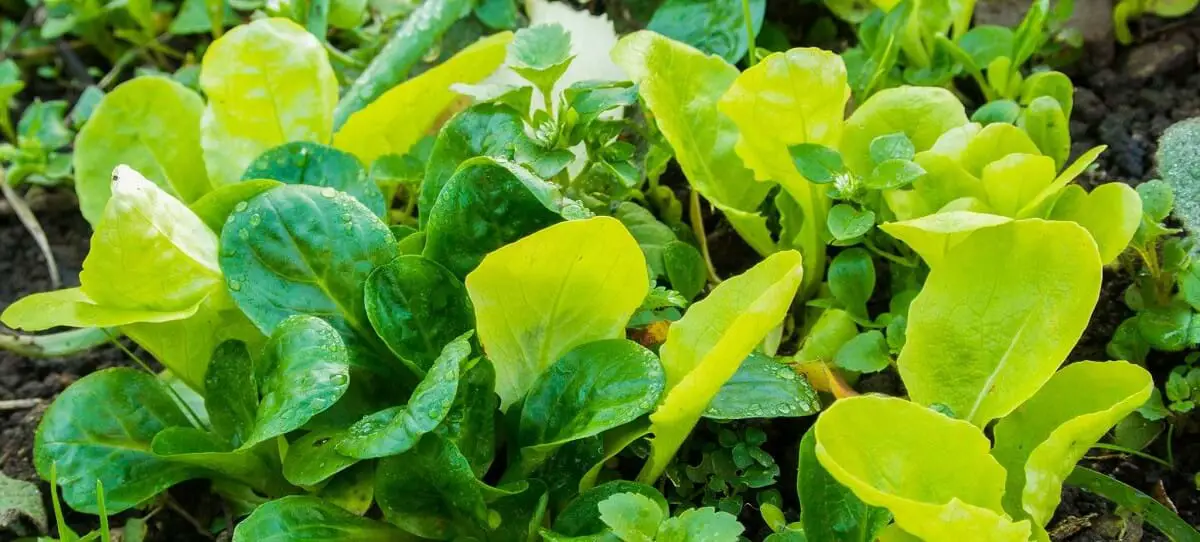Polyculture Farming Advantages What It Is And Why To Use It
Your Intensive farming Pros and Cons Guide

If you are trying to create a more sustainable garden, turning to polyculture farming methods is a great choice.
It is a well-tested and proven method to keep the soil quality high, protect the soil from damage.
In addition, it reduces problems from pests and disease while allowing you to lower the number of chemical inputs you will need(hopefully to 0).
Polyculture farming is an organic farming technique that should allow you to replace synthetic chemicals by taking advantage of natural processes.
Companion planting is a more common term for polyculture farming in small gardens.
Polyculture Farming Definition
What Is Polyculture Farming
Polycultures get referred to by many different names from cover cropping, multi-species, or cocktail mixture planting.
Polycultures are when you intentionally co-plant several different plant species in the same field or plot. [1]
It is the opposite of monoculture farming. It is a more environmentally friendly and sustainable system of crop production.
But creating a polyculture farming system is more labor-intensive. It is also more complex for the grower to manage than a monoculture. But it provides many benefits to the soil and is more environmentally friendly.
When creating a polyculture farming system, you have multiple options on how to produce your cropping system. The most common polyculture systems are crop rotation, intercropping, alley cropping, multiple cropping, and companion planting.[2]
The goal is to try to imitate what nature naturally does more closely.
In developing countries, intercropping is still the most common method of crop production. But in developed countries (United States, Europe), it has largely been abandoned in favor of monoculture crop production.[4]
More home gardeners and farmers are turning to more environmental methods helping polyculture techniques to gain popularity.
Polyculture Farming Methods
Multiple cropping
This farm system, also known as double-cropping, requires you to grow crops on the same field throughout one growing season.
After the main crop gets harvested, you will immediately plant the next. New plantings continue after each harvest until the end of the growing season.
Typical vegetation grown in multi-cropping systems is arable crops, vegetables, fiber, or fodder[6]. Smallholder farmers use it since it can efficiently utilize the land, water, and fertilizer.
Relay Cropping (Modified Double-Cropping)
Relay cropping is a modified version of double cropping. It is different because your second crop gets planted before waiting for the harvest of your first crop.[11]
In relay cropping, both of the crops will share a portion of the growing season, helping to increase the solar radiation and the available heat to both crops.
Relay cropping is gaining popularity with farmers who focus on corn grown for seed, soybean, and winter wheat crops.
Intercropping
Intercropping is a form of multiple cropping in which two or more different crops will occupy the same field simultaneously.
You first plant your main crop. Then use an additional plant to fill up all of the unused space.
Farmers use a minimum of two different crops at the same time. Another common name for intercropping is agroforestry since small crops get planted underneath plants that grow higher. Intercropping is most useful in areas with a limited amount of land available.
Crops can get planted in an organized fashion or just mixed in together randomly. Legumes are the most common items for intercropping. Since they place atmospheric nitrogen into the soil, helping reduces the need for fertilizer.
Cover Cropping
Cover crops do precisely as their name implies and cover the soil with a crop. The goal is to use them to protect the soil's surface from wind and water erosion while preventing weeds from moving in.
The top growth covers the soil surface while the roots bind and stabilize the soil particles.[10]
Cover crops also commonly get used for creating green manure. At the end of their growth, you will till them into the soil to provide nutrients back to the ground while also improving your soil's characteristics like water holding and aeration.
Crop Rotation
You will grow a different crop each time in a crop rotation system one after another on the same section of land.
It is essential to avoid growing the same crop on the land for two years. Waiting allows for the soil to replenish between plantings of the same crop.[9]
Crop rotation creates better conditions for both the plants and the soil.
You will also want to try to ensure that the root depths of the crops are different from one another.
If you want more detailed information check out our article on Intercropping and_Crop Rotation

Polyculture Farming Advantages And Disadvantages
Advantages
What are the benefits of polyculture Farming?
- Crops planted together will yield more varied and nutrient-rich contents. Studies have found that if three crops get planted together, they produce more varied nutritional content.
- The land gets utilized better, giving you better use of your available resources.
- Increase use of your soil since the crops planted together will have different root zone depths. Plants with varying root depths will maximize your use of soil nutrients.
- Increases the fertility and microbiome of your soil, improving its health. Soil microorganisms and insects like earthworms prefer soils with high biodiversity.
- A natural organic way you can start to protect your crop from different pests and diseases.
- When different types of plants get mixed in with one another, they often have better immunity against bacteria.
- Improves fruit pollination
- Reduces the ability of weeds to move into your garden since the gaps on your topsoil get filled in.
- Biodiversity helps to safeguard you against low yields and can help prevent crop failure.
- Creates plant communities that have mutual benefits to each other
Disadvantages
- Control and supervising the activities going on in the garden becomes significantly more difficult. Taking care of the needs of each of the plants is also more challenging. Correcting nutrient deficiency for one crop could affect the growth of the other plants.
- Reduces the use of automated farming equipment that you can use. The lack of available equipment means that more human labor is needed to perform tasks.
- A higher initial investment is needed. Having to cater to the needs of multiple crops at once requires a more considerable amount of infrastructure.
- Growers need to have more knowledge of their plants and how they interact with one another. Soil acidity, sun requirements, nutrients all need to get taken into account.
- Planning and planting a polyculture garden or a field takes more time and planning.
- You cannot maximize profits in a way possible compared to monoculture fields.
Polyculture Farming Examples
One of the most known polyculture examples is the Three Sisters, initially cultivated by Native Americans.
The three crops used are corn, beans, and squash.
The beans get used for adding nitrogen to your soil to get used by the other two crops. Corn is tall and acts as a support for the beans to grow. The beans will use the corn as a natural trellis. Finally, squash is used as a ground cover crop to help resist pests and weeds from moving into your garden.
The goal is to fill in your root space and vertical space with different plants that complement each other to maximize the volume of available space you have.

A Simple Companion Group
- 1. Carrots [65 DTM (days to maturity)]
- 2. Lettuce [28 DTM]
- 3. Onions [90 – 110 DTM]
The root systems of these three plants grow at different depths and will not interfere with each other.
The onions grow taller than carrots making sure they get the amount of light they require. The lettuce has a low light requirement, so the added shade from the carrots will not interfere with their growth.[5]
How To Create Your Polyculture
The basic way to begin implementing a polyculture in your garden is to mix in fast-growing crops with some pest deterrent around them. Some legumes can also get planted to help provide your soil with additional nitrogen, which will help reduce your need to use fertilizer.
Common Fast Growing Vegetables
- Radishes
- Mesclun Greens
- Lettuce
- Spinach
- Toy bok choi
- Mustard greens (giant red, mizuna, mibuna, osaka purple, komatsuna)
- Orach (mountain spinach)
- Arugula
- Baby swiss chard and baby turnips like hakurei.
Common Plants For Pest Deterrence
It is most common to use strong-smelling herbs and alliums.
Herbs
- Oregano
- Basil
- Cilantro
- Parsley
- Sage
- Marigolds
- Dill
- Parsley
- Nasturtiums
- Borage (Starflower)
Alliums
- Leeks
- Onions
- Garlic
- Shallots
- Celery
- Carrots
Check out companion planting for more ideas.
Why is Polyculture Better Than Monoculture
Monocultures use a high amount of synthetic chemicals for managing pests and providing nutrients to your crops.
Polycultures let you remove most if not all these synthetic inputs from your garden, allowing for a more sustainable gardening system.
Over time, monocultures deplete soil health. Polycultures, on the other hand, can improve your soil's health over time.
Polyculture crop production reduces risks and provides you with stable and high-quality yields. You have many ways to implement a polyculture system into your farming or garden.
What are some similarities between monoculture and polyculture agriculture?
The only fundamental similarity between these two methods is that you are growing some vegetation.
Both can use fertilizers, pesticides, and fungicides. But monocultures use significantly more compared to polyculture.
Conclusion
If you want to move into organic gardening while increasing the biodiversity of your garden, moving towards a polyculture system is a great choice.
You can use polycultures in a crop rotation or get used as green manure to increase your soil's fertility and nutrient value.
Polycultures used to be used widespread up until about 70 years ago. Then monocultures gained in popularity in the United States, Canada, and Europe.
While monocultures will allow a farmer to maximize their yields at harvest, it comes at considerable cost to the environment and health of our soils.
Similar Articles
Intercropping and_Crop Rotation
Green Manure For Clay Soil
Monoculture Farming Benefits and Disadvantages
Intensive Subsistence Farming
[1]https://www.agr.gc.ca/eng/news-from-agriculture-and-agri-food-canada/scientific-achievements-in-agriculture/polycultures-a-cocktail-mix-for-the-semiarid-prairies/?id=1558699699057
[2]https://gardenerdy.com/pros-cons-of-polyculture-farming/
[3]https://www.familyfoodgarden.com/permaculture-what-is-polyculture/
[4]https://www.sciencedirect.com/topics/agricultural-and-biological-sciences/polyculture
[5]https://pfaf.org/user/cmspage.aspx?pageid=349
[6]https://blog.agrivi.com/post/polyculture-production-system-for-sustainable-farming
[7]https://www.outdoorhappens.com/polyculture-farming-what-is-it-and-why-is-it-better-than-monoculture/
[8]https://smallfarmersjournal.com/an-introduction-into-plant-polyculture/
[9]https://gardenandhappy.com/polyculture/
[10]http://www.omafra.gov.on.ca/english/crops/facts/cover_crops01/cover.htm
[11]https://cropwatch.unl.edu/wheat/relaycrop